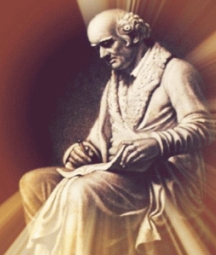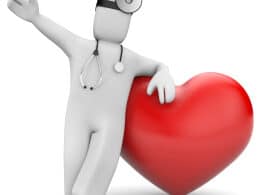Attention citizens of the world and the international medical community. Let it be officially announced that the highest honours in the science of medicine are past due to Dr. Samuel Hahnemann, a medical reformist, for his services that are taken without reward and appropriate recognition.

Sir William Ostler, known as the Father of Modern Medicine, said: “No individual has done more good to the medical profession than Samuel Hahnemann.”
Thus if medicine is free from any political motives, then medical universities and health organizations around the world must pay their respect and acknowledge that Hahnemann deserves the highest level of recognition.
Sir John Weir, of the Royal Society of Medicine, said: “Hahnemann introduced an entirely novel and scientific method of studying drug-action. He demonstrated the effect of drugs on the living human being. Surely a method far superior to the study of their toxic effect on animals. Even if drugs did affect animals in precisely the same way that they affected all other animals and humans, which is not the case – what animal could initiate us into the suicidal impulses of Aurum, the terror of death of Aconite?”
As a scientist, Hahnemann contributed to many branches of science including chemistry. Johann Friedrich Göttling was an outstanding chemist and pharmacist. He was the teacher of great chemists in history. He was appointed as an extraordinary professor of philosophy and chemistry in the University of Jena. In 1794, Professor Gottling said: “Chemistry has to thank Samuel Hahnemann for many important discoveries!”
Dr. Vortriige, M.D., at the Medical Conference in 1878, said:
“Experiments with drugs on mutilated dogs, cats, on rabbits and frogs, can throw little or no light on the therapeutic value of drugs on man, and yet we see big books published with attempts to found a therapeutics on such unsuitable data, though Dr. Hahnemann shows how drugs should be tested. The conspiracy of silence with regard to homeopathy is strictly carried out in most of the periodicals, whether medical or literary, and if we are no longer openly persecuted, we are only received as sufferance.”
It is also important to mention Hahnemann’s Fragmenta, a collection of 27 medicinal proving that was published for the first time in Latin in 1805. In Fragmenta, Hahneman numbered symptoms on each page. He then recorded the situations and times in several footnotes to the symptoms; he used differentiating type to point to degree of symptom certainty, and as well listing his own observations separately from the observations of others. In 1806, Hahnemann completed his translation of Albrecht von Haller’s Materia Medica of plants, together with their economic and technical uses, in French. The full title shows the significance of this work, in which 462 plants are described in comprehensive, characteristic details.
Dr. Hahnemann also formed a group from his students, and designated the group as a Union of Provers of Medicine to conduct clinical trials. These people were: Karl Franz who participated in provings of 37 medicines, including 1900 symptoms; Gustav Gross who helped in proving of 42 medicines, including 2380 symptoms; Franz Hartmann who helped in proving 28 medicines, including 880 symptoms; Christian Hornburg proving 24 medicines, including 750 symptoms; Christian Langhammer proving 47 medicines, including 1600 symptoms; Ernst Rückert in 8 medicines, including 100 symptoms; Johann Stapf helped in proving of 43 medicines, including 1000 symptoms; and William Wislicenus in the proving of 25 medicines, including 840 symptoms. Hahnemann examined every report of the group carefully and with exacting inspection. Everyone had solemnly to affirm before the group that what he had written was the truth and nothing but the truth.
Hahnemann was an unbiased and careful observer, a talented mind since childhood; his last essay before leaving school was on a subject selected by him, titled “The Wonderful Construction of the Human Hand.” Besides his discoveries in science and medicine, he translated into German the following: 16 English textbooks, 8 French textbooks, 1 Italian textbook.
Hahnemann also wrote: 10 books in Latin and 23 books in German, which some had 4 volumes. He wrote 41 essays on medical sciences. He wrote Organon of Medicine in several editions, Materia Medica in 6 volumes, Chronic Diseases in 4 volumes. He recorded his patients’ cases in 40 volumes of 500 pages each, plus many letters and articles that he wrote to advise his colleagues.
Following is an incomplete list of his translations from English to German:
1. John Stedtmann’s – Physiologische Versuche und Beobachtungen. Leipzig, 1777.
Original. Physiological essays and observations, by John Stedtmann. London, 1769. 8vo.
2. Nugent’s Versuch uber die Wasserscheu. Leipzig, 1777.
Original. An essay on Hydrophobia. London, 1753. 8vo.
3. William Falconer’s Versuch uber die mineralischen Wasser und Bader. Leipzig, 1777.
Original. On Mineral baths and Waters, by W. Falconers. Bath, 1775. 8vo.
4. Ball’s neuere Herilkunst. Leipzig, 1777. Original. Ball’s Modern Practice of Physic. 2 vols. 8vo.
5. Dr. M. Ryan’s Natur und Kur der Lungenschwindsucht. Leipzig, 1790.
Original. An Inquiry into the nature, causes and cure of consumption. London, 1787. 8vo.
6. A. Young’s Annalen des Ackerbaues. Leipzig, 1790.
Original. Young’s Annals of Agriculture. London, 1786. 2 vols. 8vo.
7. Cullen’s Materia Medica. Leipzig, 1790. Original. A treatise on the Materia Medica, by W. Cullen, M. D. Edinburgh, 1789. 2 vols. 8vo.
8. I. Grigg’s Vorsichtsregeln far das Weibliche Geschlecht, besonders in der Schwvangerschaft und dem Kindbette. Leipzig, 1791.
Original. Grigg’s Advice to the Female Sex. London, 1789. Svo.
9. D. Monro’s Arzneimittellehre. Leipzig, 1791.
Original. Monro’s Materia Medica. London, 1788. 2 vols. Svo.
10. F. Ringby’s chemische Bemerkungen Uber den Zucker. Dresden, 1791.
Original. Chemical remarks on Sugar, by F. Ringby. London, 1788. 2 vols. 8vo.
11. Brown’s Elementen der Medecine. Leipzig, 1801.
Original. Brown’s Elements of Medicine.
From French:
1. Demachy’s Laborant im Grossen oder Kunst die chymischen Produkte fabrikm£ssig zu verfertigen. Leipzig, 1784. Original. Proeedes chymiques ranges methodiquement et definis. Neufchatel, 1780. 2 vols. Svo.
2. Der Liquerfabrikant. Leipzig, 1785.
Original L’art du Destillateur Liquofista, par Demachy et Dubisson. Paris,1775. 2 vols. 8vo.
3. Demachy’s Kunst des Epissfabrikanten.
Leipzig, 1787.,Original. Demachy’s L’art du Vinaigrier. Neufchatel, 1780. 8vo.
4. Die Kennzeichen der Gute und Verfalschung der Arzneimittel, von I. B. Sande.
Dresden, 1787.
Original. La falsification des Medicaments devoilee. Bruxelles, 1784. 8vo.
5. De la Metherie uber die reine Luft und verwandte Luftarten. Leipzig, 1790.
Original. Essay sur l’air pur et les different especes d’air. Paris, 1785. 8vo.
From Italian:
1. A. Fabroni’s Kunst, wein zu verfertigen, Leipzig, 1790.
Original. Dell arte di fabre il vino.
From Latin:
1. Albrecht von Haller’s Materia Medica. Leipzig, 1806. 8vo.
In Latin:
1. Dissertatio inauguralis medica. Conspectus affectnum spasmodicorum aetiologicus et therapeuticus. Erlangae. 1779. 4 vols.
2. Dissertatio historico — medica de Helleborismo veterum. Leipzig, 1812. 4 vols.
3. Fragmenta de viribus medicamentorum positivis S. in sano corpore humanis observatis. Leipzig, 1805. 2 vols.
In German:
1. A Treatise on the detection and cure of poisoning with arsenic. Leipzig, 1786. 1 toI. 8vo.
2. An essay upon the bad effects arising from the use of anthracite coal fires. Dresden, 1787. 1 vol. 8vo.
3. An essay upon the influence of various kinds of air. 1788. 4 vo.
4. Directions for detecting Iron and Lead in wine. 1788. 4vo.
5. An essay upon Bile and Gall Stones. 1788. 4vo.
6. An essay upon a new and very efficient agent in the prevention of putrefaction. 1788.
7. An essay on Baryta. 1789.
8. Upon the detection of a new constituent in Graphites. 1789.
9. An essay upon the Principium adstringens of vegetables. 1789.
10. Remarks upon the Mercurius Solubilis Hahnemanni, with exact directions for its preparation. 1789. A second edition was called for in 1790.
11. A treatise on Syphilis, and its treatment with mercurius solubilis. Leipzig, 1789. 1 vol. 8vo.
12. An essay on the best means of avoiding salivation and the destructive effects of mercury! 1791.
13. A treatise on the best method of preserving health. Frankfort, 1792. 2 vols.
Svo. A second edition was published at Leipzig in 1796.
14. The Apothecaries Lexicon. Leipzig, 1793. 2 vols. A second edition was published in 1795.
15. Remarks upon the V\ urtemberg and Hahnemannean wine test. 1793.
16. Remarks upon the Cassel yellow. Erfurt, 1793. 1 vol. 4vo.
17. Remarks upon the Hahnemannean wine test, and the new Liquor probalorius fortior. 1793.
18. An essay upon the regulation of the passions. Leipzig, 1795
19. Socrates and Physon. 1795
20. An essay on the qualifications of a true physician. 1795
21. A Manual for Mothers. 1796
22. An article in defence of Klockenbring. 1796.
23. An essay upon the new method of discovering the curative powers of medicines, and a criticism upon the methods previously employed. 1796
24. Are the obstacles to the attainment of certainty and simplicity in the practice of medicine insurmountable. 1797
25. An essay on Colic. 1797
26. Antidotes to several heroic vegetable poisons. 1798
27. A criticism of Brown’s Elements of Medicine. 1801
28. A treatise on Continued and Remitting fevers. 1801
29. An essay on periodical diseases. 1801
30. Remarks upon the candor and humanity that distinguishes physicians of the 19th century. 1801.
31. A treatise on the cure and prevention of scarlet fever. Gotha. 1801. 1vol.
32. An essay on the efficacy of small doses of medicine, and of Belladonna in particular. 1801
33. A treatise on the cure and prevention of Hydrophobia. 1803
34. An essay on Coffee. Dresden. 1803
35. Asculapius upon the balance. Leipzig. 1805. 1 vol.
36. A new System of medicine, based upon pure experience. Berlin, 1S05. 1vol. 8vo.
37. Remarks upon the proposed substitutes for Peruvian bark, and upon substitutes in general. 1805.
38. An essay on scarlet fever. 1808
39. An essay on the value of the Speculative Systems of Medicine. 1808
40. Remarks on the insufficiency of the present Materia Medica. 1808
41. An essay on the abuse, and dreadful effects of mercury. 1808
42. Upon the necessity of a reform in the practice of Medicine. 1808
43. A treatise upon Syphilis. 1809
44. An essay on nervous fevers. 1809
45. On the Signs of the Times, as regards the practice of medicine. 1809.
46. A monograph on the only three possible methods of curing disease.
47. The Organon. Dresden, 1810. 1vol. 8vo.
A second edition was published at Leipzig in 1819; a third, in 1824; a fourth, in 1823; and a fifth, in 1333.
48. The pure Materia Medica. Dresden1811. 6 vols. 8vo.
A second edition was published in 1822; a third, in 1830 and a fourth, in 1833.
49. A Dissertation upon the use of Homoeopathic remedies by physicians of the old school. 1812.
50. A treatise upon nervous and hospital fevers. 1814
51. A treatise upon Syphilis. 1816
52. An essay on Burns. 1816. A second edition was published during the same year.
53. Remarks upon Suicide. 1819
54. An essay upon Purpura miliaris 1321.
55. Upon the most certain method of preventing the extension of Homoeopathia. 1825.
56. Chronic diseases. Dresden, 1828.4 vols. 8vo.
A second edition was called for in 1830, and a third, in 1835.
57. An essay on Allopathia. Leipzig, 1831. 1 vol. 8vo.
58. A treatise on cholera. 1831. 1vol. 8vo.
A second edition was published at Coethen in 1831; a third at Leipzig during the same year; a fourth at Berlin in 1831.
This humble and extraordinary man with his restless efforts, devoted his life to the welfare of humanity and the advancement of medical science. It is our moral duty to thank him properly!
As always, God bless his soul.







Thanks to Iman Naval for very good Article on “Past Due Highest Honours for Samuel Hahnemann.